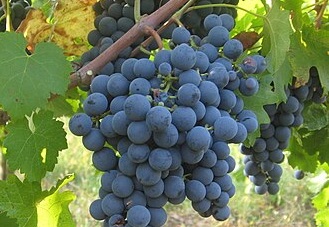
by Ross Kingsley | Jan 14, 2025 | DECODING GRAPES: FROM VINES TO VINTAGE
Carmenère, often referred to as the “lost grape of Bordeaux,” is a fascinating varietal with a rich history and a unique flavor. This deep red grape, once a staple in France, now thrives predominantly in Chile, where it has found a second home and gained global recognition.
Origins and History
The Carmenère grape originates from the Bordeaux region in France, where it was traditionally used as a blending grape in classic Bordeaux wines. Its name is derived from the French word “carmine,” a nod to the deep crimson hue of its wine. During the mid-19th century, a devastating phylloxera epidemic wiped out many vineyards across Europe, and Carmenère was thought to be extinct.
In the 1990s, the grape made a remarkable comeback. Viticulturists in Chile discovered that vines they believed to be Merlot were, in fact, Carmenère. This revelation reinvigorated interest in the grape and cemented Chile as its modern stronghold. Today, Chile accounts for the vast majority of Carmenère production, particularly in the Colchagua and Maipo valleys.
Flavor Profile
Carmenère wines are celebrated for their vibrant flavors and approachable structure. They typically exhibit notes of red and black fruits, such as cherry, raspberry, and plum, often complemented by hints of green pepper, tobacco, and spices. With moderate acidity, smooth tannins, and a medium to full body, Carmenère wines offer versatility and a distinctive character.
Famous Wines and Blends
Though Carmenère is sometimes used in blends to add complexity, it truly shines as a single-varietal wine. Chilean wineries such as Viña Montes and Casa Silva have crafted exceptional examples that highlight the grape’s depth and potential. Premium Carmenère wines often age well, developing additional layers of complexity over time.
Geographical Reach
While Chile is the epicenter of Carmenère production, the grape has seen limited cultivation in other parts of the world. Small plantings exist in Italy, the United States, and even China. In each of these regions, Carmenère reflects its terroir while maintaining its hallmark characteristics.
A Global Revival
Carmenère’s journey from near-extinction to global recognition is a testament to the resilience of this remarkable grape. Whether you’re a seasoned wine lover or a curious beginner, exploring Carmenère offers a taste of history, culture, and innovation.
Image Credit: https://wikipedia.org
_ _ _
© CHURRASCO PHUKET STEAKHOUSE / ALL RIGHTS RESERVED
>>> Reprinting, reposting & sharing allowed, in exchange for a backlink and credits <<<
Churrasco Phuket Steakhouse serves affordable Wagyu and Black Angus steaks and burgers. We are open daily from 12noon to 11pm at Jungceylon Shopping Center in Patong / Phuket.
We are family-friendly and offer free parking and Wi-Fi for guests. See our menus, reserve your table, find our location, and check all reviews here:
https://ChurrascoPhuket.com/
#Churrascophuket #jungceylon #phuketsteakhouse #affordablewagyu #wagyu
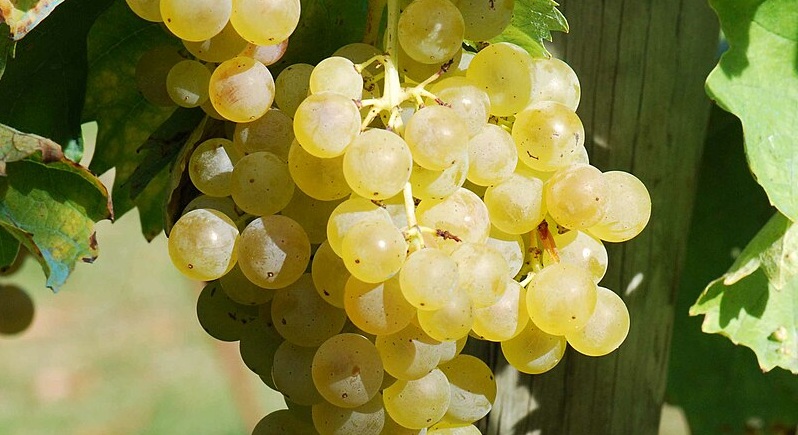
by Ross Kingsley | Jan 14, 2025 | DECODING GRAPES: FROM VINES TO VINTAGE
Trebbiano, one of the world’s most widely planted grape varieties, is a true workhorse in the wine industry. Known for its versatility and resilience, it has been cultivated for centuries, forming the backbone of many wines across Europe and beyond. Though often underappreciated compared to other varieties, Trebbiano’s contributions to the wine world are significant.
Origins and History
The origins of Trebbiano can be traced back to ancient Italy, where it remains a dominant variety to this day. The grape was mentioned as early as the first century AD in Roman agricultural texts, highlighting its longstanding presence in Mediterranean viticulture. Over the centuries, Trebbiano spread across Europe, finding favorable conditions in countries such as France, where it is known as Ugni Blanc, and beyond.
Trebbiano’s adaptability to different climates and soils has made it a staple grape in both Old and New World vineyards. Its natural high acidity and neutral flavor profile make it ideal for blending and for creating a wide range of wine styles, from crisp whites to brandies.
Famous Wines Using Trebbiano
Trebbiano plays a starring role in several iconic wines. In Italy, it is a key component of many DOC and DOCG white wines, including Trebbiano d’Abruzzo, a light, fresh, and citrus-driven wine from the Abruzzo region. It is also used in blends for Orvieto, a renowned white wine from Umbria, and in Vin Santo, Tuscany’s famous dessert wine.
In France, Trebbiano takes on the name Ugni Blanc and is a crucial ingredient in the production of Cognac and Armagnac. Its high acidity and neutral flavor are perfect for distillation, ensuring the creation of these high-quality spirits.
Beyond Europe, Trebbiano is grown in countries such as Australia, the United States, and Argentina, where winemakers value its versatility and resilience.
Geographical Reach
Trebbiano’s global presence is a testament to its adaptability. While its heartland remains Italy, where it is one of the most planted white varieties, it thrives in diverse climates. In France, it dominates the Cognac and Armagnac regions. Meanwhile, it has also found a foothold in warmer climates like California and South Australia, where it is often used in blended wines.
Whether as the backbone of a fine Cognac or a refreshing Italian white, Trebbiano proves that even the most unassuming grape can have a profound impact on the wine world.
Image Credit: https://wikipedia.org
_ _ _
© CHURRASCO PHUKET STEAKHOUSE / ALL RIGHTS RESERVED
>>> Reprinting, reposting & sharing allowed, in exchange for a backlink and credits <<<
Churrasco Phuket Steakhouse serves affordable Wagyu and Black Angus steaks and burgers. We are open daily from 12noon to 11pm at Jungceylon Shopping Center in Patong / Phuket.
We are family-friendly and offer free parking and Wi-Fi for guests. See our menus, reserve your table, find our location, and check all reviews here:
https://ChurrascoPhuket.com/
#Churrascophuket #jungceylon #phuketsteakhouse #affordablewagyu #wagyu
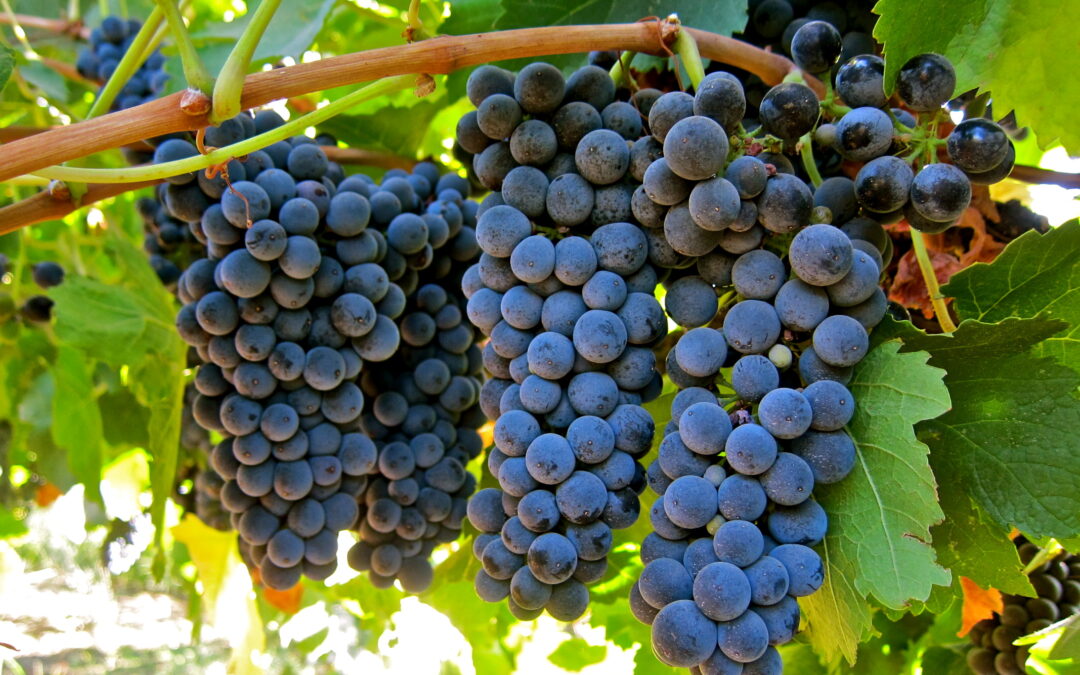
by Ross Kingsley | Jan 14, 2025 | DECODING GRAPES: FROM VINES TO VINTAGE
When delving into the world of wine, Petit Sirah is a name that piques curiosity. Despite its somewhat modest reputation, compared to more prominent varietals like Cabernet Sauvignon or Pinot Noir, this grape boasts a fascinating history, distinctive characteristics, and a loyal following.
Origins and History
Petit Sirah, known as Durif in its native France, traces its roots to the 19th century. It was created by French botanist François Durif, who crossed Syrah with a rare variety called Peloursin. The result was a hardy grape resistant to mildew, making it a practical choice for vineyards facing challenging conditions. Initially cultivated in the Rhône Valley, Petit Sirah’s appeal diminished in France over time, overshadowed by the celebrated Syrah.
However, it found new life across the Atlantic. Introduced to California in the late 19th century, Petit Sirah thrived in the state’s varied microclimates. It became a key player in blending, valued for its intense color, robust tannins, and rich flavors.
Famous Wines and Characteristics
Petit Sirah is a powerhouse grape known for producing deeply colored, full-bodied wines. Its hallmark features include bold flavors of blackberry, plum, and black pepper, often accompanied by earthy undertones and a hint of dark chocolate. High tannin and acidity levels make these wines age-worthy, evolving beautifully over time.
Though it often takes center stage in single-varietal wines, Petit Sirah’s robust profile makes it an excellent blending component, adding structure and depth. In California, producers like Stags’ Leap Winery and Ridge Vineyards have elevated Petit Sirah to prominence, crafting celebrated wines that highlight its unique qualities.
Geographical Reach
Petit Sirah’s primary home is California, where it thrives in regions like Napa Valley, Sonoma, and Paso Robles. It’s also found in other U.S. states, including Washington and Texas. Internationally, Petit Sirah has gained traction in Australia, South Africa, and Israel, where winemakers appreciate its resilience and versatility.
Conclusion
Petit Sirah may not have the widespread acclaim of its parent grape, Syrah, but it holds its own as a bold and distinctive varietal. Whether enjoyed in a single-varietal wine or as part of a blend, it offers a rich and rewarding experience for those willing to explore its depths.
Image Credit: https://www.xtrawine.com
_ _ _
© CHURRASCO PHUKET STEAKHOUSE / ALL RIGHTS RESERVED
>>> Reprinting, reposting & sharing allowed, in exchange for a backlink and credits <<<
Churrasco Phuket Steakhouse serves affordable Wagyu and Black Angus steaks and burgers. We are open daily from 12noon to 11pm at Jungceylon Shopping Center in Patong / Phuket.
We are family-friendly and offer free parking and Wi-Fi for guests. See our menus, reserve your table, find our location, and check all reviews here:
https://ChurrascoPhuket.com/
#Churrascophuket #jungceylon #phuketsteakhouse #affordablewagyu #wagyu
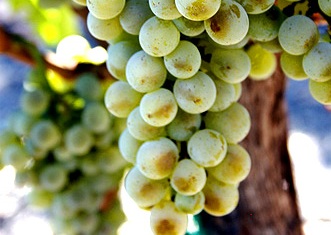
by Ross Kingsley | Jan 8, 2025 | DECODING GRAPES: FROM VINES TO VINTAGE
Sémillon is one of the wine world’s quiet achievers. While it might not have the immediate recognition of Sauvignon Blanc or Chardonnay, its rich history, versatility, and unique characteristics make it an essential grape variety to explore.
Origins and History
Sémillon originated in southwestern France, particularly the Bordeaux region, where it continues to play a critical role in some of the world’s most celebrated wines. Historical records suggest that the grape’s cultivation dates back centuries, with its name potentially derived from the local dialect, emphasizing its deep ties to the region.
By the 18th century, Sémillon had spread across Europe and beyond, becoming a favored grape in countries like Australia and South Africa. Its thick skin and natural resistance to disease made it a reliable choice for winemakers, particularly in regions where viticultural challenges were common. The grape’s versatility allows it to produce both dry and sweet wines, cementing its place in the repertoire of any serious winemaker.
Famous Wines Featuring Sémillon
In Bordeaux, Sémillon is a key player in the region’s iconic blends. Paired with Sauvignon Blanc, it contributes to the complex and age-worthy dry white wines of Pessac-Léognan and Graves. However, Sémillon truly shines in the world-renowned sweet wines of Sauternes and Barsac. Here, the grape’s susceptibility to noble rot (Botrytis cinerea) transforms it into lusciously sweet wines with notes of honey, apricot, and marmalade.
Beyond France, Australia has become a champion of Sémillon, particularly in the Hunter Valley. The region’s unique climate produces exceptional dry Sémillon wines with citrusy freshness in their youth, evolving into rich, toasty complexity with age. South Africa also employs Sémillon in both blends and standalone expressions, showcasing its adaptability.
Geographical Reach
While France and Australia remain the most prominent producers, Sémillon’s reach extends further. In South America, Chile and Argentina cultivate the grape, often blending it with local varieties. Similarly, New Zealand and the United States have embraced Sémillon in small but notable quantities, often blending it with Sauvignon Blanc to create fresh, balanced wines.
Conclusion
Sémillon may not always take the spotlight, but its contributions to the wine world are undeniable. From the golden sweetness of Sauternes to the zesty elegance of Hunter Valley wines, it’s a grape worth discovering. Whether you’re a seasoned oenophile or a curious beginner, exploring Sémillon will deepen your appreciation for the art of winemaking.
Image Credit: Wikipedia.org
_ _ _
© CHURRASCO PHUKET STEAKHOUSE / ALL RIGHTS RESERVED
>>> Reprinting, reposting & sharing allowed, in exchange for a backlink and credits <<<
Churrasco Phuket Steakhouse serves affordable Wagyu and Black Angus steaks and burgers. We are open daily from 12noon to 11pm at Jungceylon Shopping Center in Patong / Phuket.
We are family-friendly and offer free parking and Wi-Fi for guests. See our menus, reserve your table, find our location, and check all reviews here:
https://ChurrascoPhuket.com/
#Churrascophuket #jungceylon #phuketsteakhouse #affordablewagyu #wagyu
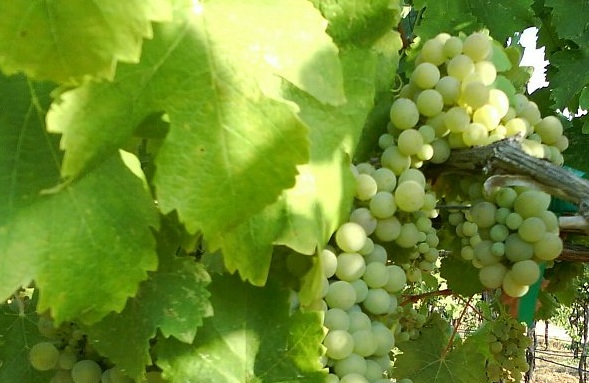
by Ross Kingsley | Jan 8, 2025 | DECODING GRAPES: FROM VINES TO VINTAGE
Viognier, a white wine grape with a storied history, is a varietal cherished for its aromatic intensity and lush texture. This grape, though not as globally recognized as Chardonnay or Sauvignon Blanc, offers a distinctive profile that appeals to wine enthusiasts seeking something unique.
Origins and History
Viognier’s origins trace back to the northern Rhône Valley in France, where it has been cultivated for centuries. The grape’s history is intertwined with the region’s ancient winemaking traditions. Historical accounts suggest that Viognier was introduced to the region by the Romans, although its exact lineage remains somewhat shrouded in mystery. By the mid-20th century, Viognier was on the brink of extinction, with only a few hectares remaining, primarily in Condrieu and Château-Grillet. However, the grape’s fortunes changed in the latter half of the century as winemakers recognized its potential, leading to its revival.
Famous Wines and Regions
Viognier is the hallmark grape of Condrieu and Château-Grillet, two appellations in the northern Rhône that produce some of the world’s most sought-after examples of this varietal. These wines are celebrated for their floral aromas, often evoking orange blossoms, honeysuckle, and apricot, along with their rich, full-bodied character.
Beyond France, Viognier has found a home in several wine regions around the world. In the United States, California and Virginia have embraced the grape, producing wines that highlight its versatility. Australia’s Yarra Valley and Barossa Valley have also made a mark with their interpretations of Viognier, often blending it with Shiraz to create complex, aromatic wines. South Africa and Argentina have joined the roster of Viognier producers, further expanding its geographical reach.
Characteristics and Appeal
Viognier is renowned for its aromatic complexity. The wines typically exhibit notes of ripe stone fruits such as peach and apricot, complemented by floral and herbal undertones. On the palate, Viognier can be luscious and creamy, with moderate acidity and a tendency to achieve high alcohol levels. When aged in oak, it develops additional layers of vanilla and spice.
Conclusion
Viognier’s resurgence is a testament to the winemakers who have embraced its potential. Whether as a standalone varietal or in blends, Viognier offers a wine experience that is well worth seeking out.
Image Credit: Wikipedia.org
_ _ _
© CHURRASCO PHUKET STEAKHOUSE / ALL RIGHTS RESERVED
>>> Reprinting, reposting & sharing allowed, in exchange for a backlink and credits <<<
Churrasco Phuket Steakhouse serves affordable Wagyu and Black Angus steaks and burgers. We are open daily from 12noon to 11pm at Jungceylon Shopping Center in Patong / Phuket.
We are family-friendly and offer free parking and Wi-Fi for guests. See our menus, reserve your table, find our location, and check all reviews here:
https://ChurrascoPhuket.com/
#Churrascophuket #jungceylon #phuketsteakhouse #affordablewagyu #wagyu
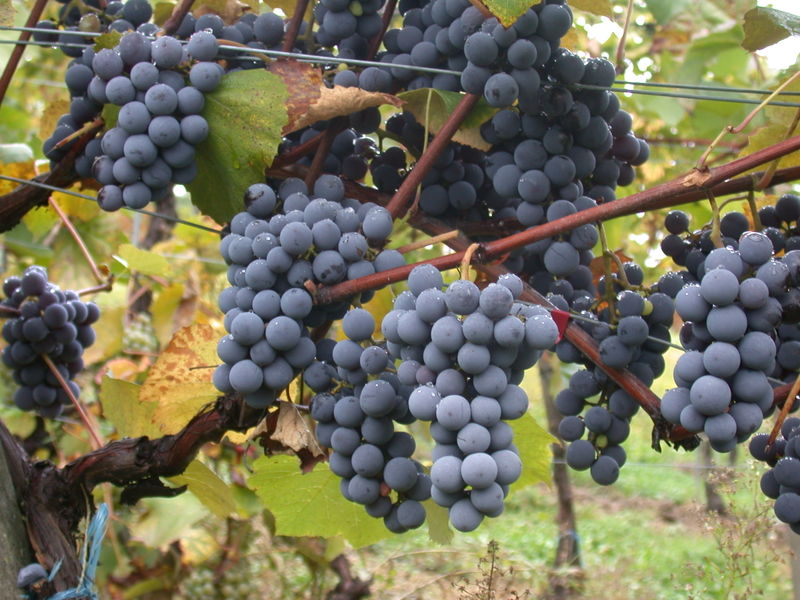
by Ross Kingsley | Jan 8, 2025 | DECODING GRAPES: FROM VINES TO VINTAGE
Gamay, often overshadowed by its more famous cousin Pinot Noir, is a red grape variety known for producing fresh, vibrant, and fruit-forward wines. Its unique characteristics make it a favorite for those seeking light-bodied reds that are easy to drink but still offer complexity and charm.
Origins and History
Gamay traces its roots to the Burgundy region of France, where it was first mentioned in the 14th century. The grape takes its name from the village of Gamay, located south of Beaune. Historically, Gamay faced an uphill battle for recognition. In 1395, Philip the Bold, Duke of Burgundy, famously banned the grape from Burgundy, labeling it “disloyal” and favoring Pinot Noir instead. This decree pushed Gamay out of the prestigious vineyards of Burgundy and into the neighboring Beaujolais region, where it flourished.
Despite its exile from Burgundy’s elite vineyards, Gamay thrived in Beaujolais, developing a distinct identity. Its resilience, early ripening, and ability to produce high yields made it a practical choice for growers. Over time, it became synonymous with the region and earned its rightful place in the wine world.
Famous Wines Using Gamay
The most notable wines made from Gamay come from Beaujolais. Within this region, you’ll find a range of expressions, from simple and refreshing to structured and age-worthy.
-
Beaujolais Nouveau: Perhaps the most famous example, this wine is released just weeks after harvest. It’s celebrated on the third Thursday of November each year, offering a light, fruity, and youthful taste.
-
Beaujolais Villages: A step up from Nouveau, these wines come from designated villages and offer more depth and complexity.
-
Cru Beaujolais: The pinnacle of Gamay wines, these come from ten specific crus (villages) like Morgon, Fleurie, and Moulin-à-Vent. These wines can be rich, structured, and age-worthy, showcasing Gamay’s potential for serious winemaking.
Geographical Reach
While Gamay’s spiritual home remains Beaujolais, its cultivation has spread globally. You’ll find it in parts of the Loire Valley, Switzerland, and even Canada, the United States, and New Zealand. Each region imparts its own unique spin, but the grape’s signature freshness and bright red fruit flavors remain constant.
Conclusion
Gamay is a grape worth exploring for its versatility, history, and delightful wines. Whether you’re sipping a light Beaujolais Nouveau or a complex Cru Beaujolais, you’ll discover why this underrated grape deserves a spot in your glass.
Image Credit: Wikipedia.org
_ _ _
© CHURRASCO PHUKET STEAKHOUSE / ALL RIGHTS RESERVED
>>> Reprinting, reposting & sharing allowed, in exchange for a backlink and credits <<<
Churrasco Phuket Steakhouse serves affordable Wagyu and Black Angus steaks and burgers. We are open daily from 12noon to 11pm at Jungceylon Shopping Center in Patong / Phuket.
We are family-friendly and offer free parking and Wi-Fi for guests. See our menus, reserve your table, find our location, and check all reviews here:
https://ChurrascoPhuket.com/
#Churrascophuket #jungceylon #phuketsteakhouse #affordablewagyu #wagyu






